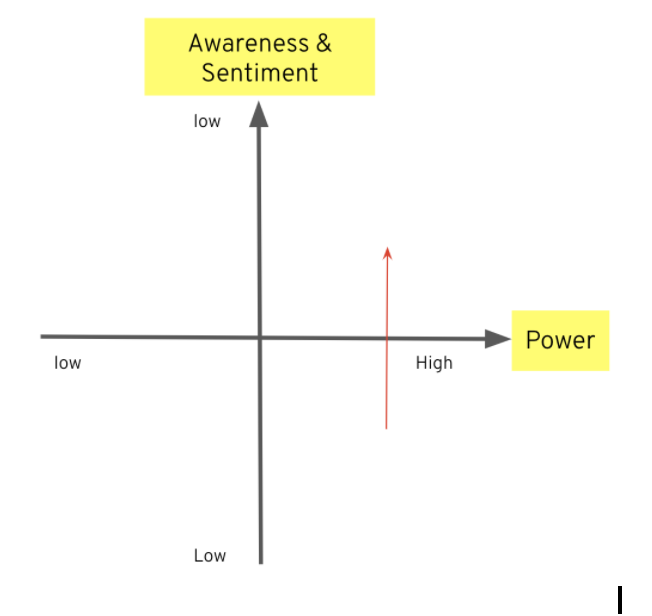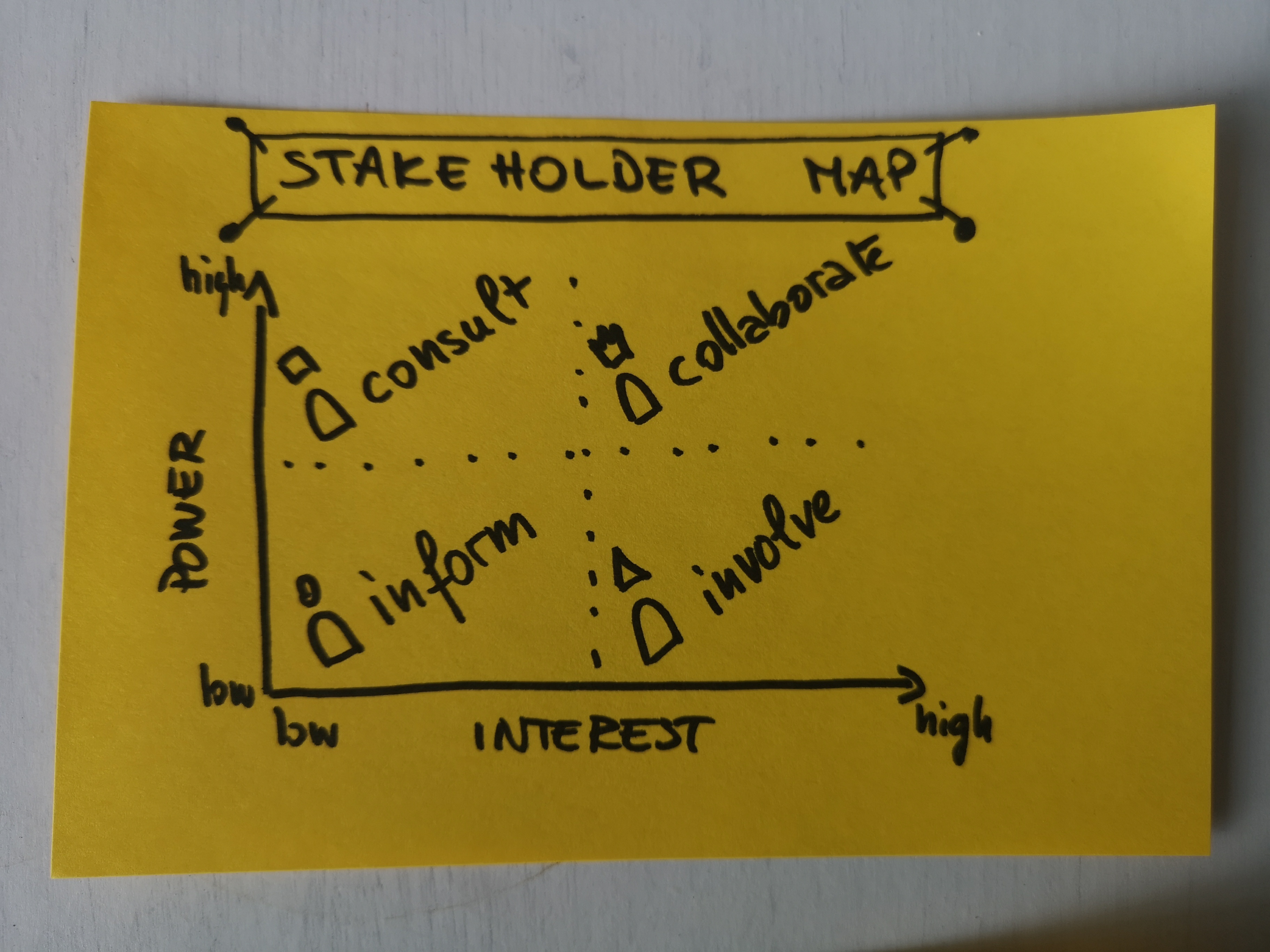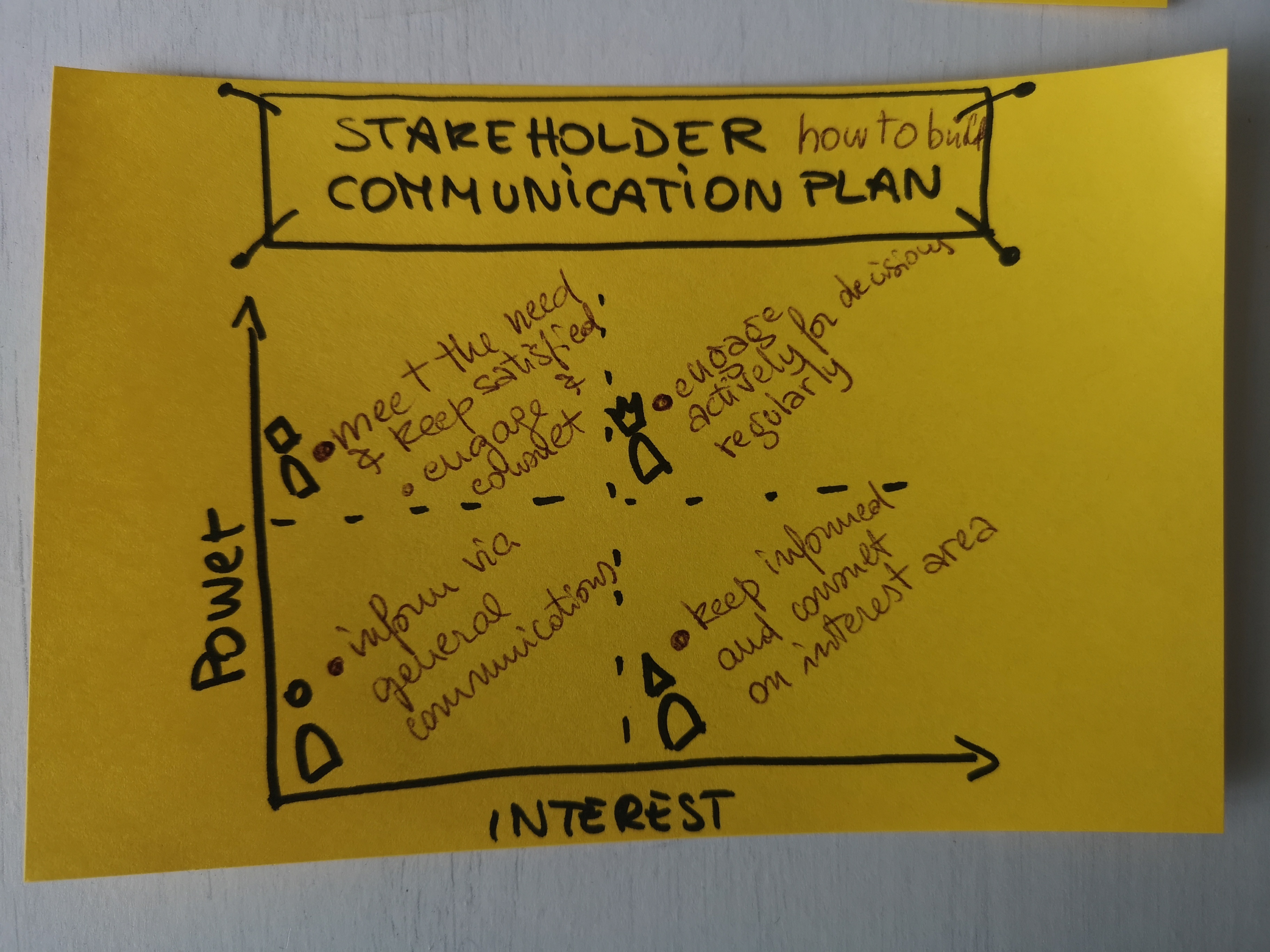Stakeholder Map
Create a stakeholders map to build a communication plan
Ilaria Doria
Jonathan Johnston
What Is Stakeholder Map?
It is a practice that helps you to understand more about your customer, mapping stakeholders and agreeing ways of communicating with different teams/people. The target outcome is to have a stakeholder map and a communication plan.
Why Do Stakeholder Map?
The Stakeholder Map can be useful when you start engaging with a new customer, while you are in a presales phase or before starting the delivery of a project.
If you are in delivery mode and the project is small/short, it is probably enough to collect information about your customer from the account team. For medium and large projects, it is important to have a full view of your stakeholders and decide actions towards every group to keep them engaged, satisfied and informed about progress and outcomes.
When you start an engagement or a project start thinking why you are requested to develop features. This brings you to look for someone like a Product Owner, the best person to start conversations and understand the goals, the why, the metrics, pain points etc. but also the one who can help identify the stakeholders.
If there is not a Product Owner, look for a Project Manager or more generically the customer in charge of the initiative you are engaged with.
How to do Stakeholder Map?
Facilitation Materials Needed
- Whiteboard, sticky notes, pens or
- an electronic canvas
Preparation:
-
Involve those responsible for the customer engagement and identify the people who should attend a short interactive session (around one hour, based on the complexity of the initiative and organisation) to be part of the mapping process. The people required are normally the key members who have a collective awareness of the initiative.
-
Organise the session, and be ready with a whiteboard, sticky notes, pens or an electronic canvas
-
Create an empty board with a title STAKEHOLDER MAP and keys (see graphs in diagrams below as an example)
Round 1:
-
Everyone individually creates a list of stakeholder groups or individuals, writing one group/individual per sticky.
-
Consider people or groups that
- Are impacted
- Can support
- Can delay if involved too late
- Are decision makers
- Are in the operations of the new process/tool when deployed
- Have been involved with a similar project in the past
- The list may include, but is not limited to, the following examples: users, the team actually doing the project, people who approve the budget and people who will own the process results.
Round 2:
-
Take everyone’s individual stickys (of stakeholders identified) and merge them all together, as a whole group, and remove duplicates
-
Finalise and agree on the groups of people to be involved, especially if the majority are named people
Round 3:
-
Create a Map that classifies groups by Power and Interest or Sentiment
-
Copy the sticky notes groups on the map
-
Define a strategy to engage and communicate per quadrant. A typical approach is thinking about who has to be informed and or consulted and who is responsible for engaging with stakeholder and the frequency
Post-follow up:
- If the initiative is reasonably small:
- Keep the poster/whiteboard visible
- Distribute to everyone involved
-
If the initiative is broad, it is recommended to share the analysis and collect feedback to fill eventual gaps needing to be clarified
-
Define a specific calendar for all the events identified and send out meetings to make it happen
-
Periodically review during retrospectives, to see if the communication plan and level of involvement of stakeholders is working or needs to be refreshed
-
Keep track of people who change roles and replace them in communications and meetings, as required
-
Be sure to onboard new stakeholders if there are organisational changes or turnover for other reasons while the initiative is ongoing. Be sure to share:
- Target outcomes, priorities
- Way of working
- Communication plan
Tips for Remote Working
-
This can be done online using an electronic canvas, sharing with all those involved.
-
Be ready to show examples of how the end result looks
-
Explain the axis really well (see graphs in diagrams below as an example), so that you get people working towards the same direction from the beginning
-
Discussion is a bit more difficult. To start the flow, be ready to ask questions like:
- Who does this person listen to?
- What are the drivers for person x?
Look at Stakeholder Map
Links we love
Check out these great links which can help you dive a little deeper into running the Stakeholder Map practice with your team, customers or stakeholders.


